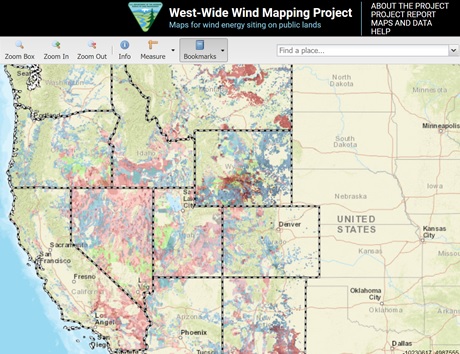
Wind Energy
The BLM has announced its final Renewable Energy Rule promoting responsible solar and wind energy development on public lands. Learn more at https://www.blm.gov/renewable-energy-rule.
Wind turbines capture kinetic energy from wind and convert it into electricity. Utility-scale wind turbines are mounted on towers, some 300 feet or taller. At those heights, the wind is faster and less turbulent. In utility-scale power applications, any number of turbines are connected to the utility grid, generating electricity as the wind turns the blades and turbine.
Over the past two decades, wind energy has seen dramatic increases in use in the United States and worldwide. The BLM manages more than 20 million acres of public lands in 11 western states with wind energy potential, and has approved wind energy projects on public lands since 1982. Currently, about 5 percent of total producing utility-scale wind energy capacity in the United States is generated from facilities on public lands.
State renewable energy portfolios, production tax credits, and the decreasing cost of equipment and technology have all contributed to public and industry interest in utility-scale wind energy development. In addition, laws enacted in most western states require power utilities to purchase a portion of their energy from renewable sources.
As a result, the BLM anticipates a continued interest in use of public lands for wind energy development. Building and operating a wind energy facility on public lands requires a right-of-way (ROW) authorization.
By completing a comprehensive programmatic environmental review of wind energy on public lands in 2005, the BLM amended 52 regional Resource Management Plans and crafted policy guidance on best management practices. The policy includes measures to mitigate the potential impact of wind energy on birds, wildlife habitat, and other resources, as well as the administration of wind energy authorizations.


